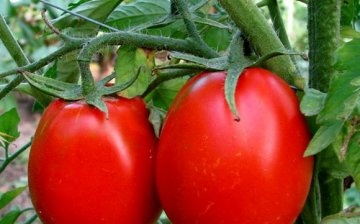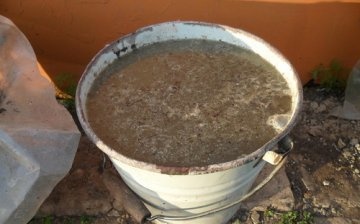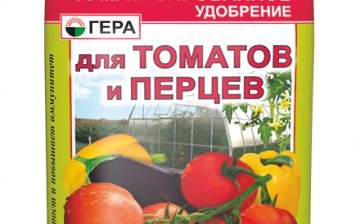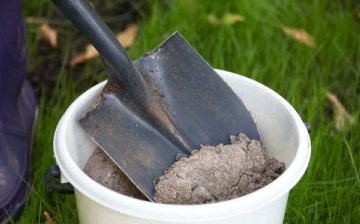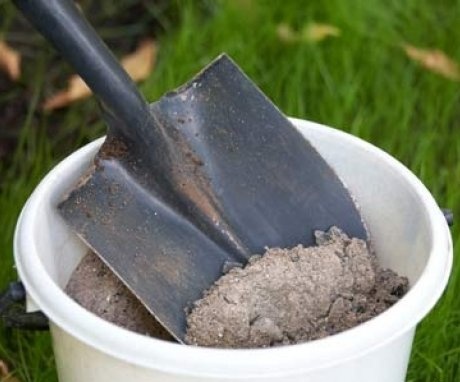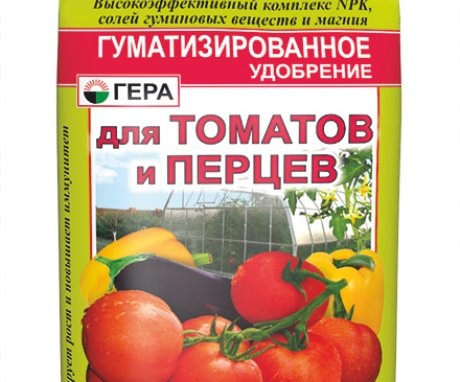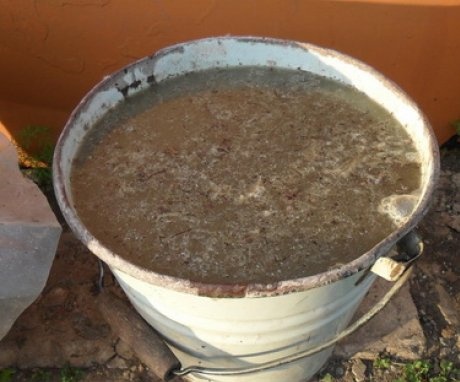How to feed tomatoes?
The pride of any gardener is juicy, bright and fragrant tomatoesgrown on the site with their own hands. But everyone who at least once tried to get a rich harvest of tomatoes in his garden was convinced that this is quite difficult to do. One of the conditions for the successful cultivation of this crop is correct and timely feeding.
Content:
- Preparing the soil for seedlings
- Feeding scheme
- Selection of finished fertilizer
- Self-made fertilizers
- Foliar feeding of plants
Preparing the soil for seedlings
Top dressing of tomatoes should be carried out in several stages. When preparing a site for planting tomatoes in early spring, digging up the ground, you need to add humus at the rate of 16 kg per square meter. At the earliest stages, when planting seedlings in the ground and until ovaries appear, a pre-prepared mixture is laid in each hole.
It is prepared from potassium chloride, wood ash and superphosphate and introduced into the soil two weeks before planting.
To prepare the ground for seedlings urea can also be used. It should be borne in mind that an overdose of nitrogen fertilizers can lead to the fact that the stems, leaves, shoots will actively grow, and the ovaries may not form at all. The risk of fungal infections of the plant increases.
From the middle of the growing season, nitrogen fertilizers cease to be applied at all.
Feeding scheme
Regular feeding of tomatoes is necessary for two reasons:
- showers and melt water thoroughly wash out potassium and nitrogen from the soil;
- all types of tomatoes are intensive crops and require a lot of minerals.
As the tomatoes grow and mature, they should be fed according to the following scheme:
- after 2-3 weeks after disembarkation. Further, temporarily do not feed the culture, waiting for the strengthening of the set fruits;
- resume fertilization after the 2nd flower brush appears;
- after the 3rd flower brush opens;
- after 12 days. The main emphasis in dressing is on the root, as through soil more fertilizer is always applied.
Selection of finished fertilizer
There are a large number of fertilizers on sale, which must be selected taking into account the composition of the soil on the site. Tomatoes are grown on soils of various types, but the most suitable is loose, fertile, capable of warming up well.
Of the complex mineral fertilizers, Agricola, Effekton, and Kemira-Universal are recommended.
Of the concentrated fertilizers, nitroammophoska is often used, produced in granules, each of which contains an equal amount of phosphorus, nitrogen and potassium. The distribution of minerals in the soil is uniform. Nitroammophoska is bred in the amount of 2 fertilizer matchboxes per bucket of water. Diammophos is also used. Many gardeners believe that biohumus is considered the most effective means of feeding, the use of which in the amount of 1 cup for each bush of a plant at any stage of growth can increase the yield by 30%.
Self-made fertilizers
Often, gardeners, using available tools at hand, prepare top dressing themselves. Many of the nutrients that tomatoes need to grow are found in regular brewer's yeast. Fertilizer is prepared in two ways:
1. Make a solution from a package of instant yeast, 2 tbsp. l. sugar and a little warm water.After about 2 hours, the infusion is mixed with a bucket of water. Yeast fertilizer in a volume of 0.5 liters is added to the watering can. The effect is noticeable after a few days.
2. Fertilizer is also prepared from raw yeast. A jar with a volume of 3 liters is filled with brown bread by 2/3, filled with warm water with fresh yeast dissolved in it (100 g). Leave to ferment in a warm place for a period of 3 days. The filtered solution is mixed with water for irrigation in a ratio of 1:10.
3. To eliminate the calcium deficiency in the soil, use eggshells containing calcium and magnesium. To enrich the earth with these substances, it is optimal to use an aqueous infusion on crushed shells. It is necessary to withstand the solution under the lid for 2 weeks, the degree of readiness is determined by the appearance of a pungent odor. The infusion is added to the water for watering tomatoes in a ratio of 1 to 3.
An effective fertilizer is cow dung. You can spread it out in the beds, and when water gets on the fertilizer, the tomatoes will receive regular feeding. For a more effective effect, manure is mixed with peat and the soil is mulched with this composition.
When small fruits appear, many gardeners often use diluted chicken manure, sometimes with the addition of urea. This must be done very carefully, otherwise there is a risk of burning the plant roots. To do this, water with a solution at some distance from the plants, 15 centimeters.
Gardeners also use potassium permanganate in the form of a weak solution, which is both a fertilizer and a protective agent against diseases.
Foliar feeding of plants
Additional foliar dressing is used to stimulate the defenses of the plant. Good results are obtained by spraying with New Ideal once a week. During flowering, successful foliar feeding is carried out using a solution of boric acid, diluted in a ratio of 1 g per liter of water. 2-3 such sprays every 10 days improve fruit set.
It is not surprising that tomatoes require such careful maintenance, because a vegetable ready to eat is very rich in a variety of biologically active substances and has a whole range of useful properties.
Tomatoes are delicious not only raw, but also salted, pickled, in the form of pastes and juices. Tomatoes are powerful antioxidants that can prevent cell aging. This vegetable reduces the risk of cancer. Tomato cleanses the walls of blood vessels, preventing strokes, heart attacks, atherosclerosis. Used for varicose veins. In terms of iron content, it surpasses chicken meat, milk and fish.



